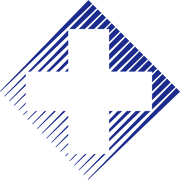Learn About Screenings This National Prostate Health Month

While National Donut or Dog Day might be more fun to celebrate, it’s essential to pay attention to designated holidays that focus on health care. This September is National Prostate Health Month, and it’s the perfect time to schedule a screening to check for cancer. If you’re wondering whether it’s too early to get tested and what you should expect from the screening itself, use the following guide to take charge of your prostate health.
When Should You Get Tested?
As a general rule, most health care professionals encourage patients to start getting screened in their mid-40s. However, if you have a family history of cancer, especially prostate, pancreatic, breast, colon, or ovarian types, you should schedule a screening by your 40th birthday. This start date is also recommended for patients with African ancestry and those with a family history of the Lynch syndrome, HER2, or BRCA gene mutations.
Also, the further north you live, the more susceptible you could be to prostate cancer. Men who reside in northern latitudes should be screened every three to five years.
What Should You Expect From the Screening?
 Your prostate screen will likely start with a PSA test. This will point out elevations in blood antigens that correspond to the prostate. If your levels are high, your health care provider might schedule a biopsy. If they aren’t, your doctor will keep the record to track your prostate health over time.
Your prostate screen will likely start with a PSA test. This will point out elevations in blood antigens that correspond to the prostate. If your levels are high, your health care provider might schedule a biopsy. If they aren’t, your doctor will keep the record to track your prostate health over time.
The next part of your screening will be a digital rectal exam, or DRE. During this test, the doctor will physically inspect the rectum to assess the prostate from inside the body. Signs of potential cancer include an augmented or irregularly shaped prostate.
If you’re approaching your 40s, get a jump on National Prostate Health Month at Alaska’s Fairbanks Clinic. They’ve offered health care services to men and women since 1932. To learn more about their specialties, visit the website. You can also call (907) 452-1761 to schedule an appointment today.
About the Business
Have a question? Ask the experts!
Send your question

